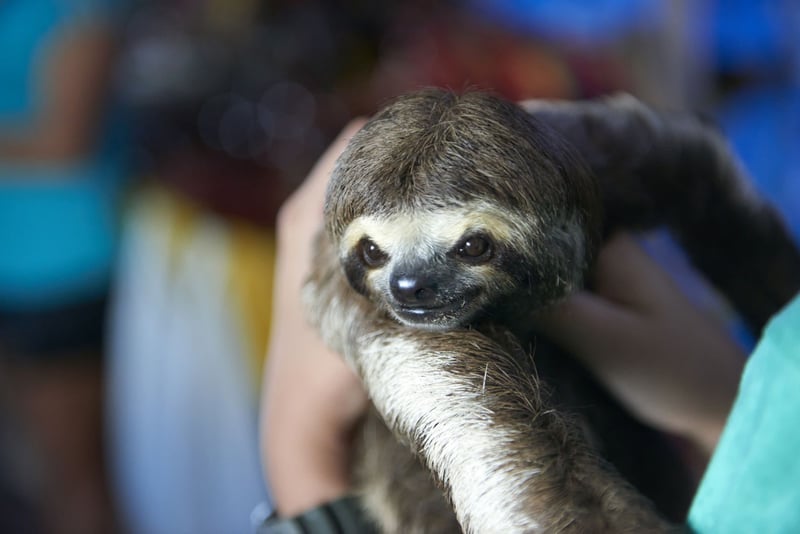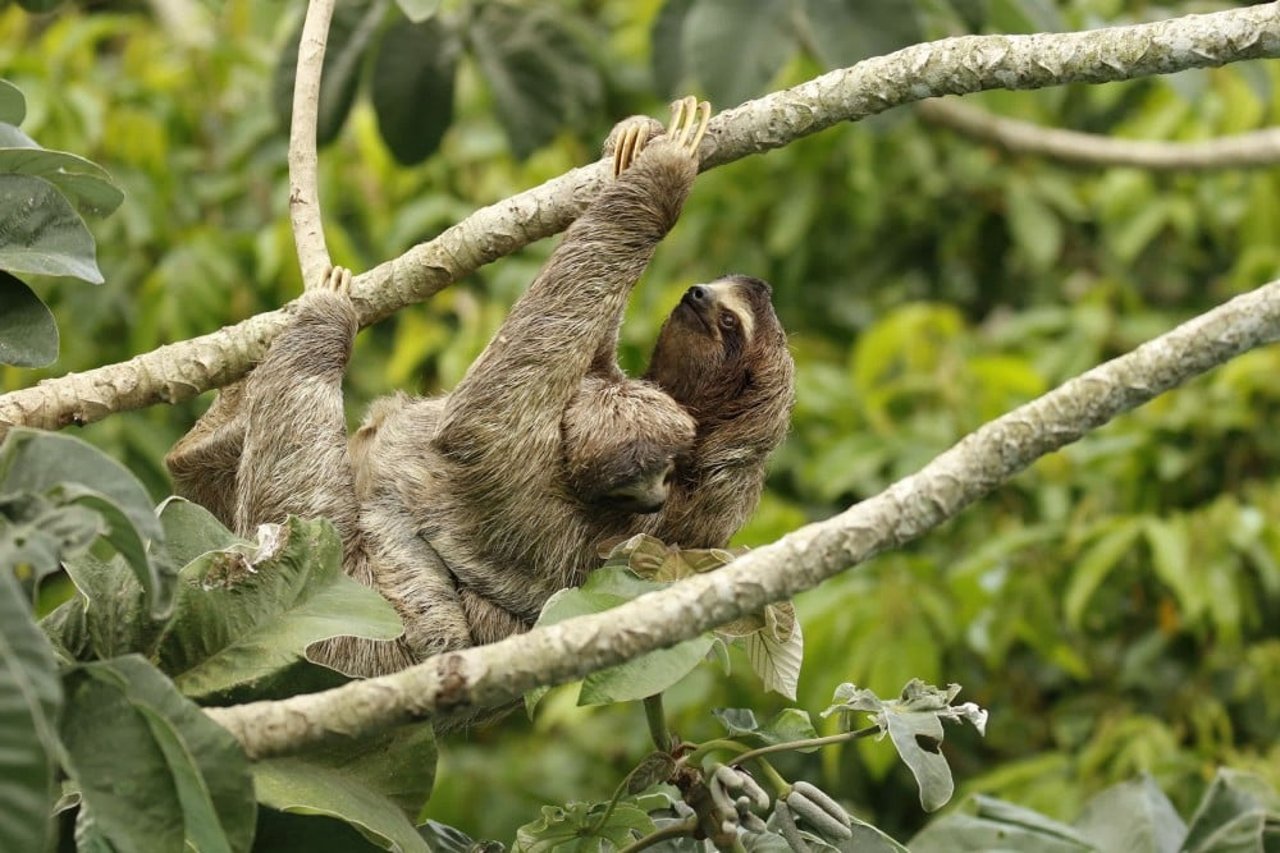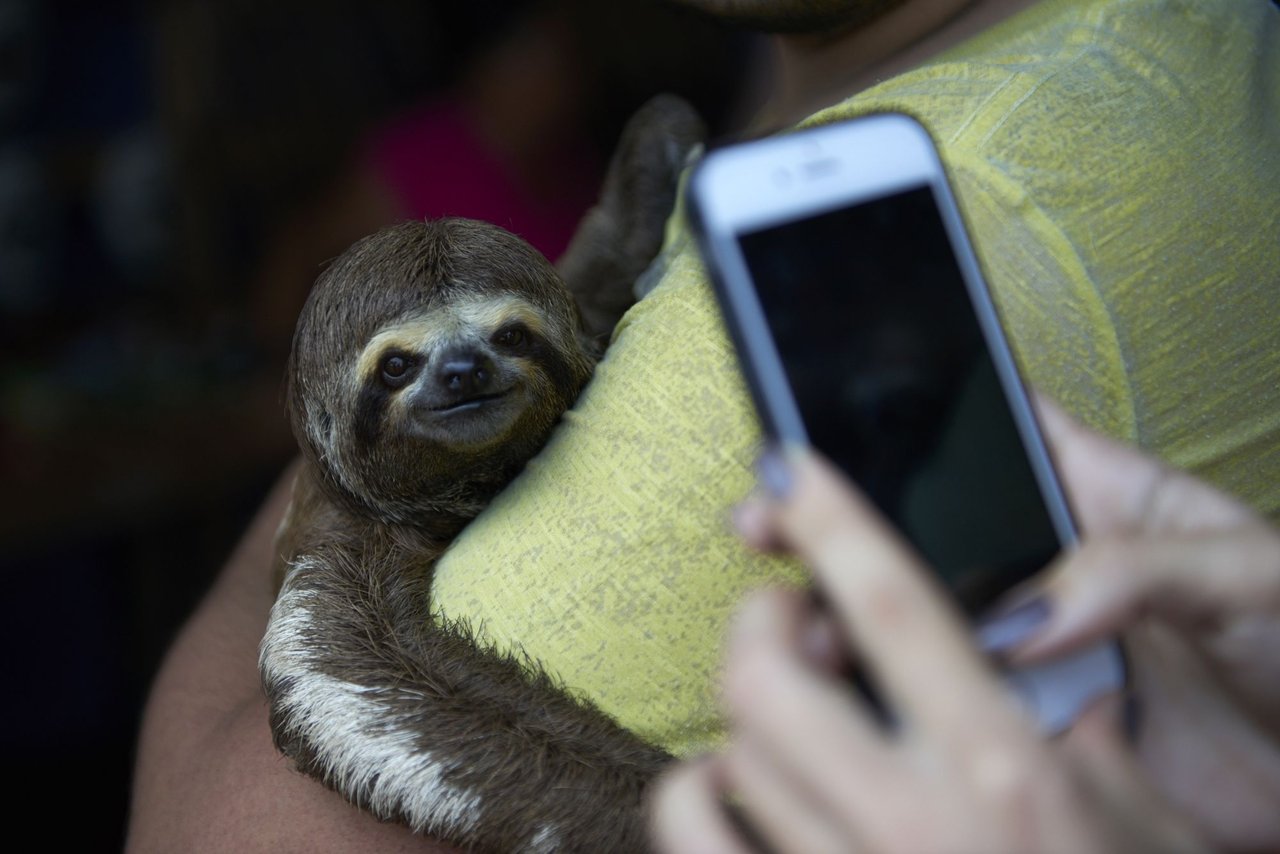
Our research shows that when sloths are taken out of their natural habitat to be handled by tourists, it damages their health and mental wellbeing
Each year, hundreds of sloths are taken from the wild to be used as photo props for tourists.
Of the six species of sloth, brown-throated three-toed sloths are most commonly used for tourist selfies. Their quiet, docile nature makes it easier for people to take them from the wild and use them for tourist entertainment.
These wild animals are often held by their arms or claws while being passed from person to person. Many of these tourists have never held a sloth before. It can be an exciting, once-in-a-life-time opportunity.
But we wanted to research the true impacts on the welfare of the sloths involved. Knowing how sloths are affected would help us understand how we can protect them.
A gap in research
Scientific investigations in the past have found that handling wild animals can cause them physical and psychological stress.
However, no research that we are aware of has looked at the impact that direct contact with people has on the welfare of sloths.
To help us protect sloths, we researched the impact direct human contact has on these wild animals.
What sloth behaviour tells us about their welfare
Monitoring animal behaviour is a reliable and common method for interpreting their emotional states and welfare. So we examined sloths’ behaviour while they were being handled, to see how their welfare is affected.
But first, it was essential to know how sloths normally behave. This would give us a comparison between how sloths behave in their natural habitat, and how they behave when being handled by people.
In January 2017, I travelled to Medellin in Colombia to visit the AIUNAU. This is a rescue and rehabilitation centre for sloths and other animals, including anteaters and armadillos. I spent some time observing the sloths housed there, collecting data on their behaviour. Although the sloths were not in their natural environment, they had been successfully rehabilitated and were about to be released back into the wild. This meant they were showing natural, normal behaviour.
When people touch sloths, it can have a negative impact on their welfare.
Filming sloths used for selfies
To help compare sloth behaviour, two dedicated researchers posed as tourists and travelled to Colombia and Brazil to film sloth selfies being taken by tourists.
They gathered hours of footage. Back in London, we reviewed the footage to observe the sloths’ behaviour when being handled. Using statistical analyses, we compared the behaviour of the sloths when being handled to when housed in a semi-natural environment at the rescue and rehabilitation centre.
What we discovered
We found big differences in the sloth’s behaviour.
When the sloths were being handled, they were more vigilant, suggesting they may have been fearful of their surroundings. They also slept less, and behaved in ways considered abnormal for the species.
We concluded that it’s highly likely that some of the behaviours observed are indicators of fear, stress and anxiety caused by direct physical contact with people. The behaviours observed indicate that when sloths are being used for selfies their welfare is compromised.
Many tourists fuelling the demand for up-close encounters with sloths don’t realise the damage such activity causes to the animals involved.
But we know that handling sloths can cause them stress and anxiety. And it can shorten their lifespan.
This research helped provide some of the evidence for our Wildlife Selfie Code campaign.
The suffering we discovered shows that it’s vital we speak out for sloths in tourism. Will you sign our pledge, and help spread the word about the harm selfies can do to sloths?

